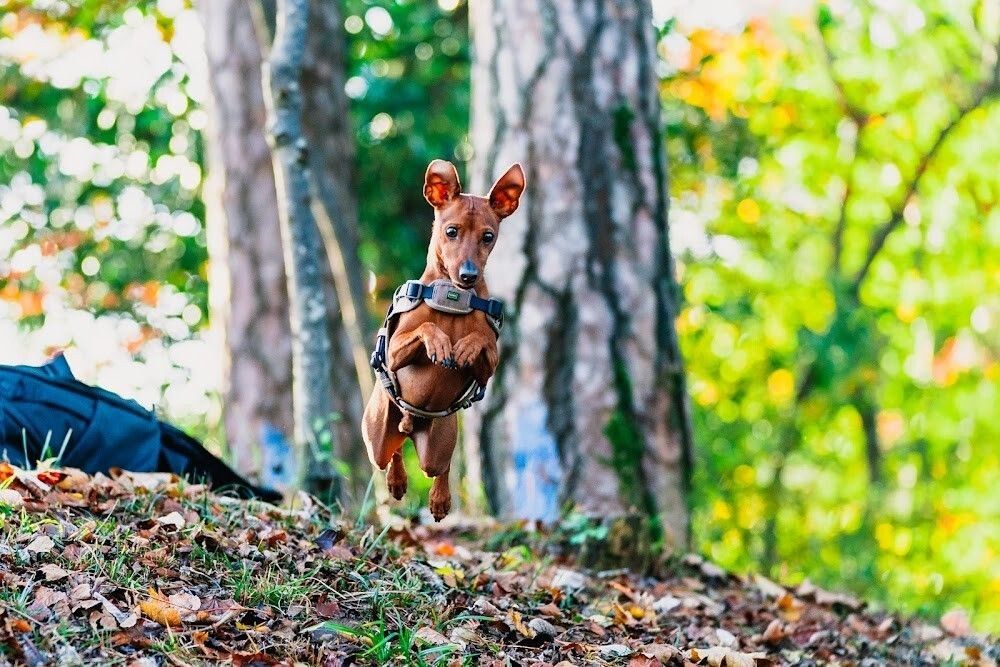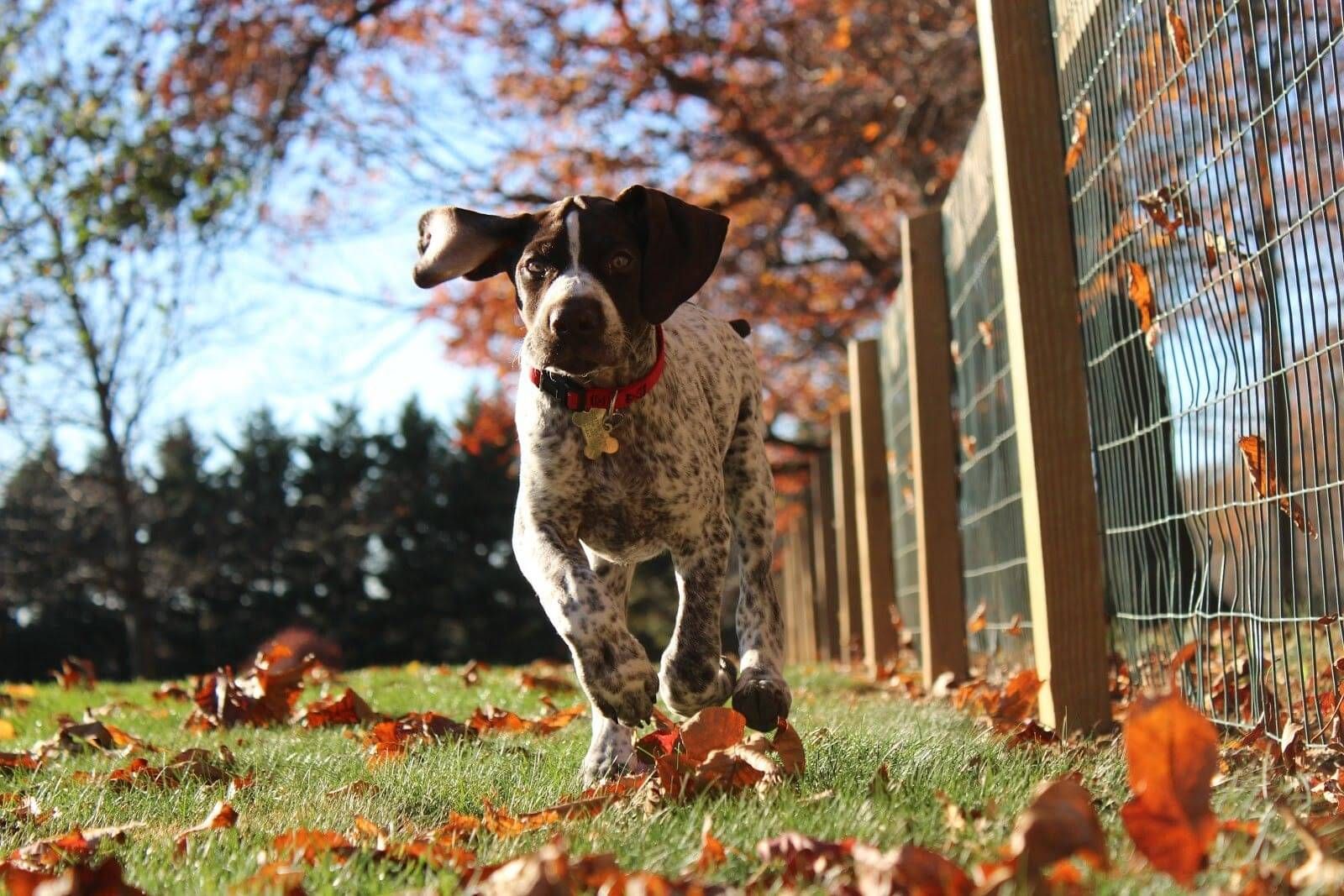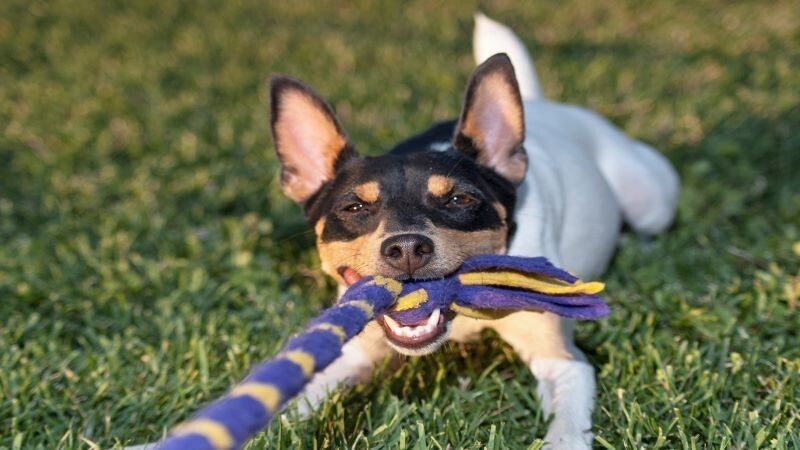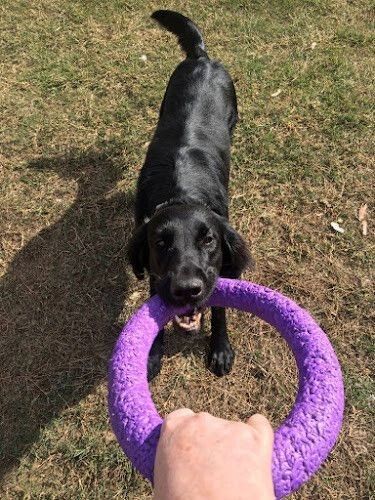TOY PLAY WITH YOUR DOG
Playing with toys can be a great way to connect with your dog and build a strong relationship. It can be super FUN, but it has a lot of other terrific benefits such as teaching your dog impulse control and rewarding a recall. It can also be a great way to get your dog’s attention and distract them away from other interesting things in the environment. If the ‘interesting thing’ is something scary for your dog, you can create a positive association by playing with toys.
Predatory Action Sequence (PAS)
Dogs are predators who hunt, and hunting is made up of a predatory action sequence:
Scent-Eye-Stalk-Chase-Grab bite-Kill bite-Dissect-Consume
It’s important to consider your dog’s breed/s to see how they may like to play. For example, a border collie will enjoy the eye, stalk and chase part of the PAS. So you can tap more into that part of the play.
Type of Toy
Most dogs prefer soft material to hold onto. Rough or abrasive materials such as rope can hurt your dog’s mouth (especially teething puppies) and they may not want to engage in a game with you. Try fleece, cotton, wool or faux fur. Make sure the toy has a bit of length to it; otherwise it will be hard to keep your hand away from your dog’s mouth. Toys on poles (flirt poles) can be fun provided they are used correctly (ask us how!).
Please note we do not encourage games with sticks.
Building Value in Toys
Keep some toys away from your dog in a drawer or out of reach so they can’t get to them. Your dog can have toys they have free access to, but the ones you play with keep in a secret spot. This way, the toy holds greater value for your dog once you bring it out to play.
How to Introduce Play
Thinking of the PAS, start by bringing out the toy, and showing it to your dog, but make a big deal of it – so hide it and move around with it – perhaps saying ‘what’s this?!” You are trying to engage the PAS by scent and eye first. Then, get the toy to move! Wiggle it on the ground, move it around to engage the ‘stalk’ and ‘chase’ part. Try being side on to your dog and low down (perhaps kneel down). Avoid standing over your dog as they may not want to approach to take the toy.
Rules
Once your dog has started to enjoy toy play, as with any game, there needs to be some rules. Rules can teach your dog the impulse control that many dogs need.
Teach Take
Because you have built such a high value in your toy, some dogs will grab onto it as soon as they see it, even if you aren’t ready. To teach impulse control, (in other words wait until I’m ready); simply introduce a verbal cue to start the game such as “take” or “get it”. Introduce the word at the same time your dog begins to engage in a game, and then as they get better at it, just delay the time until you say the cue. If your dog grabs the tug before you’re ready, just ask them for it back (see give below) and start again.
Teach Give/swap
To get the tug toy back off your dog, you will need to teach a reliable give cue. To do this, once your dog has the tug toy in their mouth, freeze the toy (stop moving it) and offer a high-value treat (chicken, beef, etc) right on their nose to trade. To take the treat your dog needs to let go of the toy. Once they do, give them the treat and lots of praise. When they do this really well, put a verbal cue on the behaviour, such as ‘give’. If your dog won’t give the toy up for a treat, try a different type of food or another toy.
No Teeth on Skin
No teeth on skin, no matter how accidental should be allowed. The aim of toy play is to have a good time with your dog, it shouldn’t end in blood! If your dog mistakes you for the toy, simply end the game (drop the toy) and walk away. There is no need to shout ‘no’ or grab your dog. This will only make you seem unpredictable. Your dog may run around with the toy in glee, but soon realise that it isn’t any fun without you. Remember you have built this toy up to be special! So try again after a few minutes.
Control Arousal Levels
If you have the type of dog who really gets into toy play in a big way, it is more effective to have short games than to play a 5-minute game that ends in your dog getting out of control and jumping all over you and mouthing you. Keep games to 10 – 20 seconds long, ask for a give (reward!), ask your dog for a sit (reward!), then start another game. By interrupting the game you can control your dog’s arousal levels more effectively.
Should I let My Dog Win?
Yes! For some dogs, it’s the best part. To encourage your dog to bring you the toy back, once your dog has the toy, back away, kneel down and turn on your side and encourage them to bring it back to play again. Avoid chasing your dog (unless that’s the game they like!) or moving into their space. Try 2 toys – the Puller rings are fantastic for this.
Finish Cue
Put the end of play on cue by introducing a ‘finish’ or ‘end’ cue. This means no more toy play for now, and the toys go away into the drawer. Don’t be tempted to be enticed back into play again and again otherwise your finish cue will definitely not be the end of the game.
Safety
Young puppies/dogs should not play ‘fetch’ type games repetitively as it may lead to injury or damage.
When playing tug games, move the toy gently from side to side and try to mimic a dog when you tug. Avoid spins, shakes, jerks, or bouncing on the end of the toy. Doing so just adds an unnecessary risk of injury. The dog’s neck is built to have power from side to side, not up and down.
If your dog has an injury or is recovering from injury, please see your vet or rehabilitation specialist for advice about toy play.
Have fun with your dog!




